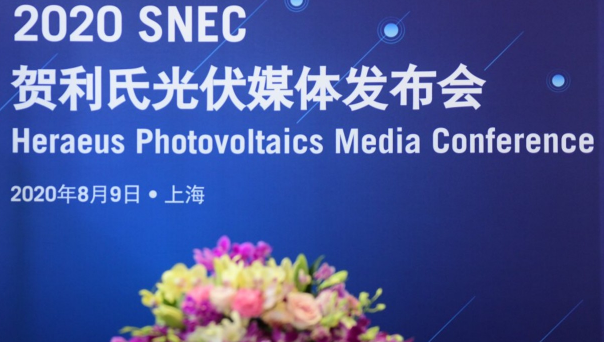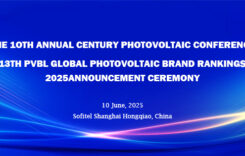PVTIME – Heraeus Photovoltaics, a leading technology solutions and metallization pastes provider for the renewable energy industry, addressed the media during the 14th SNEC International Photovoltaic Power Generation and Smart Energy Exhibition & Conference in Shanghai last week.

Having introduced its latest and most advanced line of high-performance SOL 7 Series back in June, Heraeus Photovoltaics President Wen Zhou focused mainly on providing an in-depth forecast which indicated that COVID-19 has not affected the current momentum and long-term worldwide growth of solar energy.
As PVTIME has reported, following the initial outbreak of COVID-19, production in China was halted due to factory shutdowns. Initially, demand remained high for solar products and there were large amounts of backorders for many manufacturers from buyers who wanted to avoid potential supply shortages and uncertainty regarding further disruptions. However, when production regained momentum in China, there was a noticeable shift in the global supply and demand balance due to the spread of the virus globally. Demand from the residential PV segment was severely affected due to the financial uncertainty faced by the customers. The C&I segment was also affected as discretionary spending got delayed, and preserving short-term cash flow became a priority. Moreover, in the utility segment, supply chain disruptions and weaker investments led to delays in project commissioning as well.
However, despite the slowdown, the renewable energy sector has fared better than the rest of the energy sector. The solar industry is seeing signs of recovery with the resumption of projects in many parts of the world, especially in China where the goal of achieving grid parity has not wavered. Developers are aiming to meet the deadline for grid connection before the subsidy window closes at the end of year.
In terms of installation capacity, the global estimate for 2020 was adjusted from 142GW to 105GW by IHS Markit. However, based on industry research and input from its global network of PV trading partners, Heraeus is projecting annually PV installations to nearly double by 2025, reaching 200 GW in new capacity additions annually. Ms. Zhou stated, “The fact that PV is continuing to grow without subsidies or market incentives is a positive indicator that solar is not only establishing itself as a significant energy source, it is also sustainable.” Evidently, China increased its original installation target from 40GW to 45GW while the U.S market is expected to achieve record installations in 2020. In Germany, with the removal of the 52GW cap, solar development will remain stable as well.
In a recent study commissioned by the International Renewable Energy Agency (IRENA), renewable energy production is projected to grow significantly compared to traditional energy sources. By 2050, a transformative energy scenario will increase renewable energy from 25% to 86%, and solar energy is expected to grow from 1.5% to 25% of the total electricity generation over that time period.
Unlike mature traditional energy sources, the PV industry has yet to reach an ‘innovation ceiling’. Continual improvements in wafer, cell, module production and processing technology continue to drive down the LCOE, making solar even more economically viable. According to LAZARD, a global research and advisory firm, since 2019, solar LCOE has dropped an impressive 90%, faster than that of coal, nuclear, or natural gas.
For Heraeus Photovoltaics, designing and providing next-generation conductive silver pastes for the production of higher-performing cells and modules will remain as its crucial contribution to the reduction of solar LCOE and conversion efficiency improvement. According to the latest PERC efficiency roadmap from the Institute for Solar Energy Research (ISFH), “advanced metallization technology” and “multi wire + finger 10um” are key factors of the metallization process that need to be improved in order to achieve the industry goal of 24% efficiency for PERC technology. Through their offering of advanced metallization solutions with ultra-fine-line and superior metallization contact, Heraeus is confident that its customers will be able to achieve this goal.











